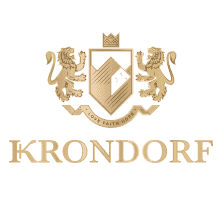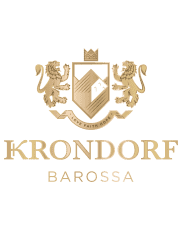Hufendorf farming
In many of these Hufendorf farms, vines were planted among the other produce, creating small weingartens. While some crops failed, many vines flourished, which proved their hardiness and suitability to the region’s soils.
Aerial view of Krondorf Road today.
Our Founders View labels depict the traditional Hufendorf farms like those planted by the original Krondorf village farmers.
Small stone slate-roofed barn in Krondorf, one of many built by the early settlers. Image courtesy of the Department for Environment and Water, South Australia from publication: Heritage Survey of the Lower North – District Council of Tanunda (part) 1983 page 7.



